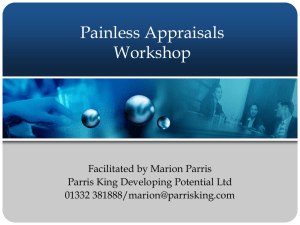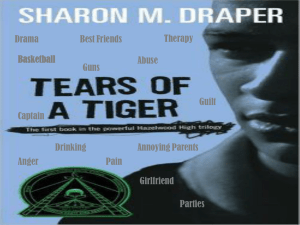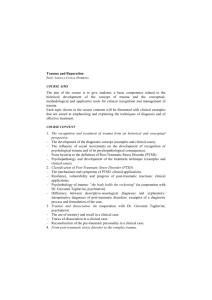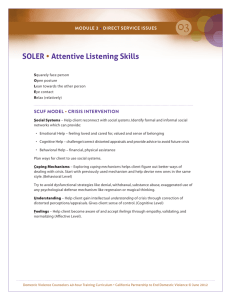Cognitive-Emotional Theories and Trauma
advertisement
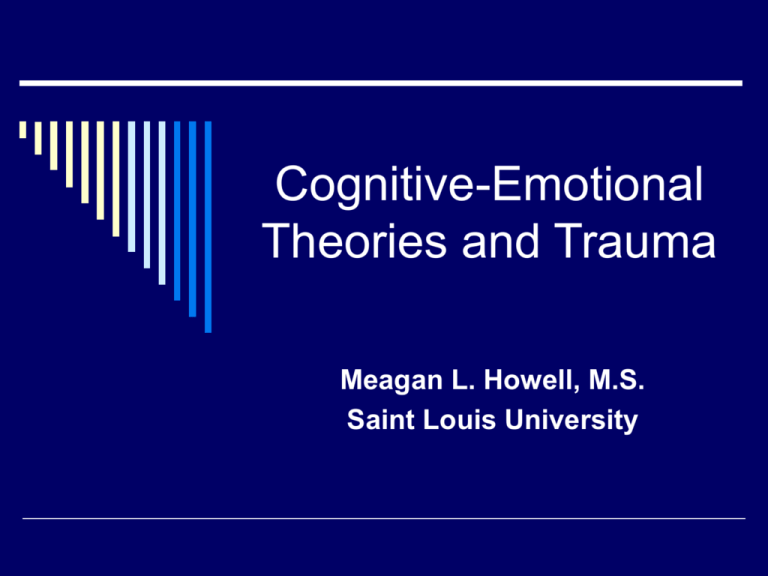
Cognitive-Emotional Theories and Trauma Meagan L. Howell, M.S. Saint Louis University Theories of PTSD Cognitive Models Changes in memory function Automatic processing Shattered core beliefs Janoff-Bulman Stress Response Theory Initial emotional reaction to trauma Efforts to “assimilate” new info from the trauma into knowledge base Information Processing Theory Trauma memories processed in separate & distinct way Incomplete processing leads to PTSD Cognitive Behavioral Theory Aaron T. Beck Examine the interactions between thoughts, emotions, and behaviors. Experience over time impacts the patterns we develop THOUGHT EMOTION BEHAVIOR CBT and Trauma Focus is on victim’s: Memory functioning Information processing Shattered or challenged core beliefs Avoidance strategies Self-criticism Social Learning Theory Albert Bandura Observational learning Modeling Key for Learning: Learned Helplessness Martin Seligman Lack control in environment Related to depression and anxiety responses Attributions / Locus of Control Internal Internal: External: v. External Attributions / Locus of Control Global v. Unique Global: Unique/Situational: Attributions / Locus of Control Stable v. Unstable Stable: Unstable: Maladjustment DEPRESSION ANXIETY Internal External Global Global Stable Unstable Victim’s Appraisals Negative appraisals that develop can be either external or internal: External appraisals are typically related to viewing the world and others as potentially dangerous and harmful Internal appraisals are more often related to a sense of responsibility for the trauma Types of Appraisals Overgeneralization of the traumatic event into normal events Appraisals of one’s emotional and behavioral responses during the event These appraisals are thought to lead to feelings of shame, responsibility, and guilt Kubany’s Model Connects PTSD to social psychological elements including hindsight bias, responsibility, and determinism The key is the symptom of posttraumatic guilt Post-Traumatic Guilt Define guilt as, “an unpleasant feeling with an accompanying belief (or beliefs) that one should have thought, felt, or acted differently” (p.429). Guilt is an important factor in the development and maintenance of PTSD symptoms in combat veterans, victims of domestic violence, rape, child sexual abuse, and reckless drivers Hindsight bias cognitions “should have, could have, if only” contribute to post-traumatic guilt Guilt tends to be tied to one’s behaviors Shame Sense of public exposure of some mistake or failure, accompanied by feelings of disapproval in the eyes of others and a negative evaluation of the self (Tangney, Miller, Flicker, & Barlow, 1996). Shame is tied more closely to the Self
